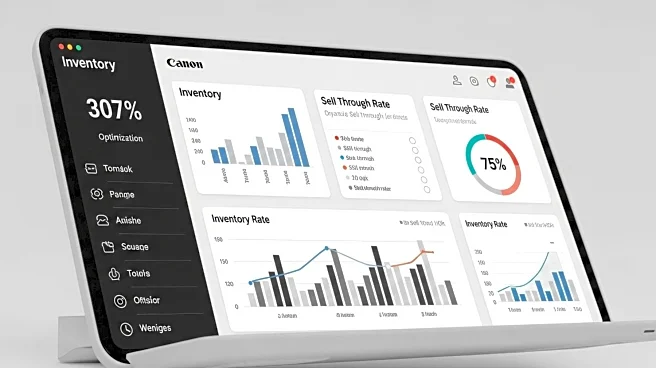What is the story about?
What's Happening?
Shopify has published a detailed guide on the sell-through rate (STR), a key performance indicator for inventory management and profitability in retail. The sell-through rate measures the percentage of inventory sold in relation to the number of units received from manufacturers during a given period. This metric is crucial for understanding sales trends and optimizing inventory levels. Shopify emphasizes the importance of regularly calculating STR to minimize overstocking and better understand customer preferences. The guide provides strategies for improving STR, such as refining inventory purchasing, running strategic promotions, and leveraging data for demand forecasting.
Why It's Important?
The sell-through rate is a critical metric for retail businesses as it directly impacts profitability. A high STR indicates strong product demand, allowing retailers to optimize inventory and reduce carrying costs. Conversely, a low STR suggests overstocking and inefficient inventory management, which can lead to increased storage costs and reduced profit margins. By understanding and improving STR, retailers can enhance cash flow, forecast demand more accurately, and strengthen supplier relationships. This metric also helps measure the effectiveness of marketing campaigns and can guide strategic decisions to boost sales and profitability.
What's Next?
Retailers are encouraged to adopt strategies outlined by Shopify to improve their sell-through rates. This includes using AI-driven planning for better inventory forecasting, running targeted promotions, and utilizing product bundling to move slow-selling stock. Additionally, retailers can leverage Shopify's tools, such as Stocky and Shopify Audiences, to enhance inventory management and marketing efforts. By focusing on these strategies, businesses can expect to see improved sales performance and profitability, especially during peak seasons and major events.
Beyond the Headlines
The emphasis on sell-through rate highlights the growing importance of data-driven decision-making in retail. As consumer preferences evolve and supply chains become more complex, retailers must adapt by using technology to gain insights into sales trends and inventory management. This shift towards data-centric strategies not only improves profitability but also enhances customer satisfaction by ensuring popular products are readily available.
AI Generated Content
Do you find this article useful?













